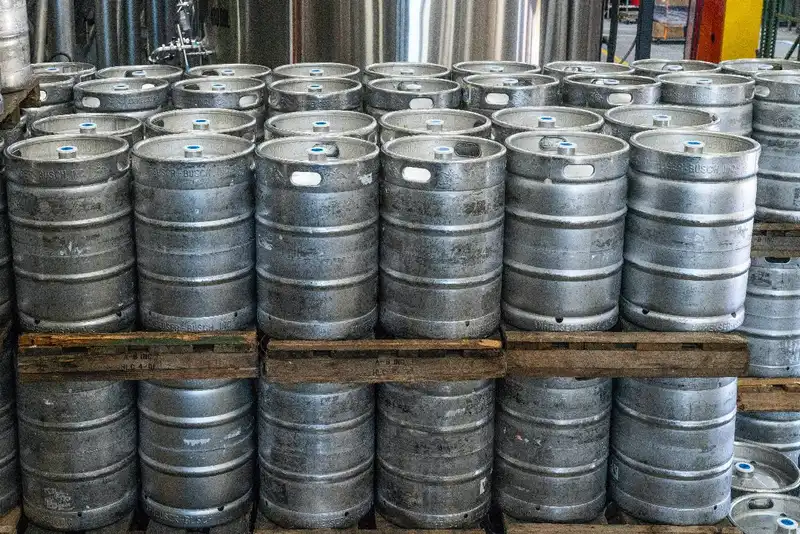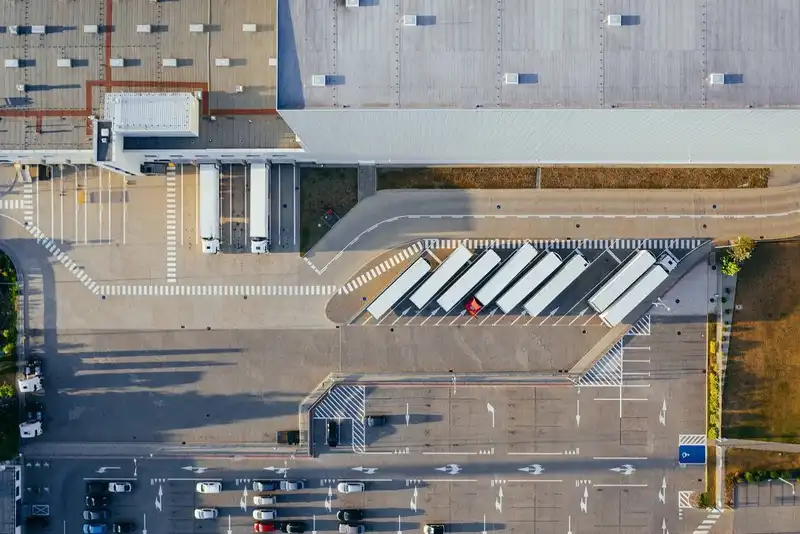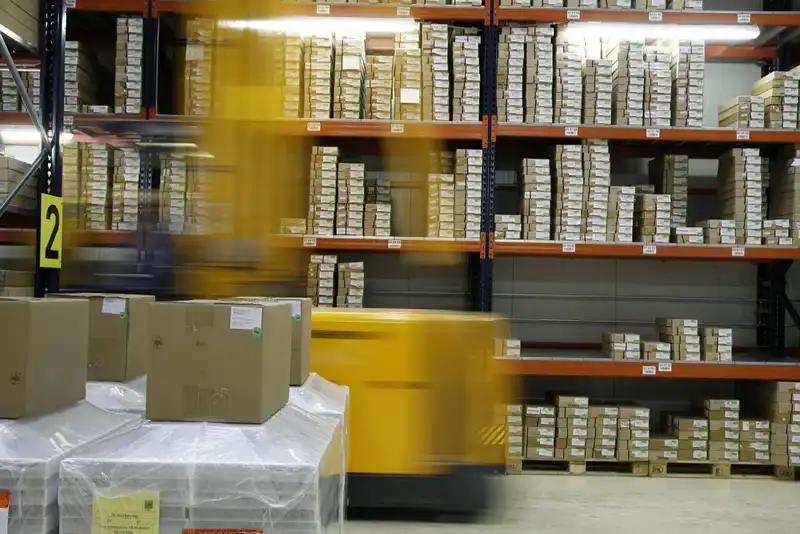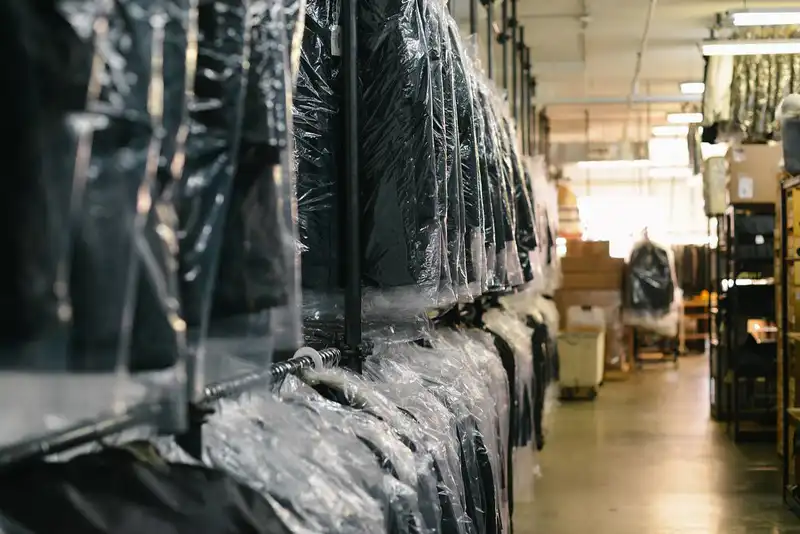6 Steps of the Order Fulfillment Process - Guide for Businesses
Introduction to the Order Fulfillment Process
From the customer's perspective, order fulfillment is a one-time event that occurs when their package is delivered. However, this process looks vastly different from the company's point of view, as it involves several back-end operations.
While some organizations with large product ranges fulfill orders on an order-by-order basis, most businesses standardize an operating procedure to streamline order fulfillment. Although the actual process isn't initiated until an order is placed, companies must have the inventory, packing materials, and carriers ready before they can accept customer requests.
It takes extensive planning to get materials, employees, machinery, and third parties in place for order fulfillment. However, through careful strategizing, companies can guarantee order accuracy and timely deliveries.
What is Order Fulfillment?

Order fulfillment is the process of receiving and completing customer requests through the distribution of goods. This process begins the moment a consumer places an order and ends when they receive their shipment. However, order fulfillment can be elongated if the customer initiates a product return, refund, or exchange.
Successful order fulfillment includes
- Recording transactions
- Accurately picking products
- Delivering shipments on time
- Updating inventory records
While marketing campaigns initiate customer contact and sales, order fulfillment is the back-end system that finalizes transactions so businesses can exchange their goods for income. When streamlined, order fulfillment can actually preserve profits so companies can extend their bottom line.
Order Fulfillment Strategy Considerations
Order fulfillment looks slightly different for every organization, as they may handle diverse inventory, clients, and order volumes.
Order Volume

A business that fulfills large order volumes will have a significantly different strategy than a startup trying to increase sales. Low order volumes may be more cost-effective as companies are typically able to keep order-fulfillment in-house and minimize operational costs.
On the other hand, corporations that handle hundreds of orders daily may need automation tools to streamline different stages of the fulfillment process. These businesses may also need multiple warehouses to store inventory and more extensive staff.
To determine order volume, management need to calculate
- The number of stock-keeping units (SKUs) the business sells
- The number of customer orders placed monthly
- The number of orders shipped monthly
Sales Channels

Order fulfillment depends heavily on the sales channels where businesses market their products and services. Common sales channels include
- Social media
- Online marketplace
- Branded website
- Brick-and-mortar store
- Mobile app
- Print catalogs
Retailers that utilize online sales channels need software that gathers and aggregates customer requests from every platform, creating a universal order fulfillment interface. This eliminates the need for employees to navigate multiple platforms to manually consolidate orders, which often results in human errors.
With software, warehouse staff is automatically alerted as soon as a new order is placed, triggering the fulfillment process. Advanced solutions even integrate with existing inventory management and ordering software to update stock levels in real-time. Once quantities dip below reorder points, the ordering software places a purchase order, preventing stockouts.
Locations

The locations of customers, warehouses, and distribution centers are also critical to the order fulfillment process, as they can directly impact the timeliness of shipments. Ecommerce consumers especially expect quick deliveries, as 24% of customers will cancel orders if shipping is too slow.
Affordability also plays a factor in location, for 73% of consumers expect affordable, quick deliveries. However, this may not be possible for businesses unless their fulfillment centers are centrally located around their target market.
By minimizing the number of shipping zones they are willing to deliver to, organizations can significantly reduce their shipping costs.
There are currently nine shipping zones in the United States, each measuring how far the package must travel from the fulfillment center
- Zone 1 - 50 miles
- Zone 2 - 51-150 miles
- Zone 3 - 151-300 miles
- Zone 4 - 301-600 miles
- Zone 5 - 601-1000 miles
- Zone 6 - 1001-1400 miles
- Zone 7 - 1401-1800 miles
- Zone 8 - 1801+ miles
- Zone 9 - Freely associated states
These costs tend to be higher for centers located in rural areas, as they have to travel further to reach more populated areas. However, shipping from multiple locations can minimize transportation, shipping, and other logistics costs, allowing businesses to offer expedited shipping.
Customization

Companies that offer personalized products that are fragile, specially wrapped, or custom-made need to carefully choose everyone in their network that handles their inventory.
It is the most secure to use in-house fulfillment for these types of items so that management can maintain complete control over customization, packaging, and shipment dates. However, businesses that use third-party vendors must have full confidence in their partners to protect products during packing and deliver items safely.
Order Fulfillment Types
Based on the previous considerations, there are different fulfillment options that may work for some businesses and not others.
In-House
In-house order fulfillment, also known as merchant and self-fulfillment, uses a business's own resources and employees to handle customer requests, from inventory management to final shipments. This means that the company must supplement the overhead costs of storing inventory on-site, such as rent, utilities, and shipping materials.
This option is ideal for organizations that want to maintain full control over their entire order fulfillment process. Most startups begin with in-house fulfillment because they have a small inventory range, low order volumes, and can't afford a third-party service. However, as small businesses expand, they tend to outgrow their original store and may require additional services to keep up with demand.
Third-Party

Third-party, or outsourced, order fulfillment is when a business uses an external provider to handle one or more fulfillment processes. There are companies that handle other organization's
- Inventory management
- Picking lists
- Product packaging
- Shipments
- Returns processing
With third-party logistics (3PL), companies do not have to expand their personal storage space and staff, saving labor, operational, and overhead expenses. Therefore, businesses that don't have sufficient space or capital to invest in warehouses typically use 3PL.
Dropshipping
Dropshipping is when companies employ manufacturers to produce, store, and ship products. In dropshipping, a customer order is immediately relayed to the manufacturer, where they prioritize product picking and initiate deliveries, giving the business little to no control over their supply chain.
This is an excellent fulfillment option for companies that want to minimize their overhead costs. However, most manufacturers reside overseas. This means that any expenses saved in housing inventory could be spent on shipping products. Longer shipments could also result in late deliveries and unsatisfied customers.
Hybrid
Hybrid fulfillment is a mix of dropshipping, in-house, and third-party fulfillment. Businesses using the hybrid method may have separate companies that handle production, inventory, and order picking.
Some organizations even use external providers for only specific products. For example, businesses that handle some customized items recruit a third-party expert to handle personalized orders while keeping regular inventory in-house.
The hybrid model is most commonly used by organizations that require more flexibility within their supply chain due to expansion or unique inventory.
Stages of the Order Fulfillment Process

The order fulfillment process has many moving parts that work simultaneously. This requires businesses to implement an organized strategy to ensure each stage is performed accurately and efficiently.
1. Receive
Receiving refers to the acceptance of incoming inventory, whether at a warehouse, distribution center, or retail store. Each shipment must be audited, recorded, and stocked to ensure the product picking crew can begin fulfilling orders.
As soon as inventory arrives, employees must cross-examine the physical units with the purchase order, invoice, and shipping list to ensure all products are present and intact. Any damaged items should be returned immediately for a refund or credit.
At this point, any new SKU barcodes should be created and implemented into the management system.
2. Store

Once everything is double-checked, employees can begin storing inventory in their proper places around the warehouse. Products should be kept organized to minimize travel time for product pickers.
The warehouse layout should already be optimized to improve fulfillment speed and accuracy. For example, items with high-turnover rates should be stored close to the fulfillment areas, whereas less popular products should remain in the back of the warehouse.
Companies should also remember to separate product variances by SKUs to reduce picking inaccuracies.
3. Pick
The fulfillment process officially begins when a customer places an order. When businesses have an ordering solution established, pickers are automatically alerted with every request.
Once the order reaches an employee, they locate the items within the warehouse. Manually picking usually consists of a paper packing list that details where the products are stored. An inventory management system displays the item's location and automatically updates the stock quantities to reflect the outgoing products.
4. Pack
When the order's items are at the packing area, workers begin wrapping the products to ensure they aren't damaged during transportation.
Depending on the type of inventory, employees may use bubble wrap, tissue paper, or packing peanuts. The type of packing materials used also depends on the company's weight limit for standard packages.
After all of the items are wrapped, some businesses print off an invoice that outlines the order before sealing the box with packing tape.
5. Ship

When the package is sealed and given a shipping label, it is ready to be shipped to its final destination.
There are several shipping options available for businesses, but it ultimately depends on the company's budget. While customers will almost always want the quickest delivery option, some organizations do not have the means to expedite standard orders.
Small businesses typically ship via United States Postal Service (USPS), while some large corporations partner with carriers to minimize shipping costs and offer customers fast delivery options.
Once the order is shipped, many businesses will send the tracking information to customers so they can check their delivery status.
6. Process Returns
All retailers will experience a return for one reason or another. Therefore, businesses need to implement a comprehensive return policy to clarify how and when customers can initiate the return process.
Companies also need to implement a process to be able to accept returning products and introduce them back into inventory.
How to Streamline Order Fulfillment
After implementing the order fulfillment system, businesses should slowly make improvements to improve service speed and accuracy.
Automate Processes

Most stages of the fulfillment process can be automated with modern software, including
- Inventory management
- Inventory ordering
- Picking list generation
- Return management
With software, businesses can automate repetitive tasks, minimizing labor costs and human errors. With automatic data entries, managers don't have to worry about erroneous counts or calculations.
Utilize Inventory Data

Inventory software also collects data from each transaction to generate detailed reports. This information enables management to improve their order fulfillment strategies to improve efficiency, accuracy, and speed.
For example, managers can use historical inventory data to adjust reorder points and the warehouse layout to maintain flexibility with fluctuating customer demand.
The order fulfillment process is extensive and subjective to each business, as it often varies depending on the inventory type, budgeting, and space availability. Therefore, owners need to look at each operation carefully to determine which methods best suit their needs.





